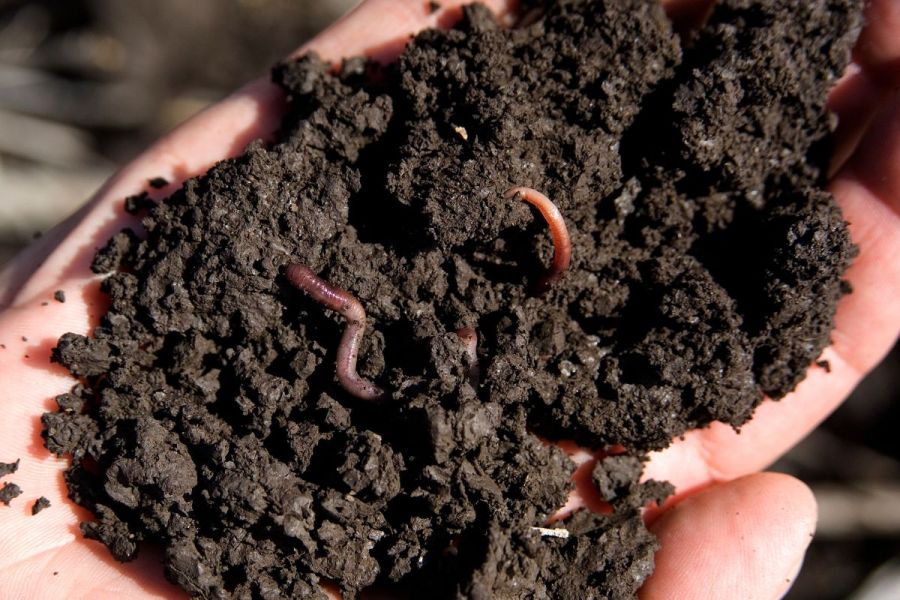The role microbes play in plant growth and nutrient acquisition is a relatively recent discovery. CPM talks to researchers about endophytes and rhizophagy.
“Through this rhizophagy cycle plants can access a lot of nutrients, especially some of the micronutrients that are hard to get.”
By Mike Abram
Just how plants are fundamentally linked to and rely on microbes is only just starting to be understood, partly thanks to research by a relatively unknown professor from Rutgers University in New Jersey, USA.
Professor James White has been researching endophytes – microbes that live in plants – for most of his 45-year career. This began with endophytic fungi in grasses before more latterly concentrating on bacterial endophytes in plants. “These endophytic fungi and bacteria are all over and inside plants but cause no disease, instead, they’re beneficial,” he explains.
In fact, they’re vital to plant life and function. For example, without microbes, plants wouldn’t produce root hairs. “The root hairs only form because bacteria are inside the root cells and those bacteria secrete things like ethylene or nitric oxide which trigger the root cells to form hairs,” says James.
That was one of his discoveries after building on an initial observation made by a group of Australian microbiologists in 2010, of how plants seemed to absorb microbes through their root tips.
This rhizophagy process is a cycle beginning with plants releasing exudates – sugars and other edible material – that attract soil microbes. It’s mostly bacteria, although fungi also follow the trail of nutrients secreted from the plant.
“When they get to the tip of the roots the plant then sucks some into the root cells. How that happens we don’t know, but we can see them going in using florescent and other dyes,” he explains.
Once the microbes are internalised into the root cells, the plant begins to extract nutrients from them using reactive oxygen, superoxide, which removes the cell walls. “Some of these microbes will be fully degraded, while others will remain as naked protoplasts – bacteria without a cell wall,” adds James.
Secretions made by the microbes in the cells then trigger root hair formation, he says. “As the root hairs grow, some of the microbes are ejected back out of the roots into the soil where they acquire more nutrients and are attracted back to the root tips.
“And through this rhizophagy cycle plants can access a lot of nutrients, especially some of the micronutrients which are hard to get, such as manganese, iron, zinc and also sometimes calcium.”
The cycle shows how plants directly use microbes from soils, explains James, making a direct connection between plant and soil microbiology. “I consider it a vindication for what organic and more latterly regenerative growers have been saying – that it’s not necessarily about chemistry, it’s about microbiology.
“It’s the basis for biological agriculture and we can use microbes to grow healthy, nutrient-rich and stress-hardy crops. It also gives promise that we can grow crops without all of the environmental degradation which occurs when using chemical fertilisers and pesticides,” he suggests.
Applying chemical fertilisers diminishes the rhizophagy cycle in plants, continues James. “When we apply chemical nutrients to plants they no longer require the rhizophagy cycle, so they absorb fewer microbes and don’t have to degrade them. In the long-term, plants will lose access to those microbes if we continue to use a lot of chemical fertilisers.”
But as well as supplying nutrients, the rhizophagy cycle has other potential benefits for plants including making them more resistant to abiotic stresses such as drought and extreme temperatures.
“The process when the plants are using superoxide to get the nutrients out of the microbes makes them more resistant to oxidative stress because they have to upregulate their own oxidative stress mechanisms and produce more antioxidants.
“They become richer in phenolics and other antioxidants such as flavonoids and terpenoids, which means they are less susceptible to oxidate stress, and become more resilient.”
That also could help crops to become more nutrient-dense, he says, as those compounds are important nutrients for human health. Rhizophagy also plays a role in plant disease tolerance, with plants which are full of microbes being more resistant to disease.
“It’s because of a couple of reasons. One, because the microbes colonise the fungi and when they do, they change the behaviour of the fungus making it less virulent.
“The microbes don’t kill the fungus, but they tend to affect their development and make it less likely to cause disease. For example, if a pathogen can get its nutrient from endophytic bacteria it doesn’t have to attack plants to get those nutrients,” he claims.
“There’s also an indirect effect related to the hardiness of the plant. Many pathogens, when they cause disease, infect the plant producing reactive oxygen and inciting disease. But when the plant is oxidative resistant, the fungus doesn’t really achieve this.
“So one effect is that it strengthens the host so there’s less disease, and the other effect is changing the behaviour of the pathogen to make it less pathogenic,” explains James.
He’s tested that theory by taking microbes from a land-race corn grown in Mexico and Peru where fertilisers are used much less, and put them on a seed of a cultivated plant resulting in lower disease and healthier seedlings.
However, maximising the rhizophagy cycle on farm starts with soil health, he says. “Maintain and build soils, increase organic matter and treat soils to preserve the microbiology; don’t over-fertilise or use excessive herbicides.
“Grow cover crops – these are sources of endophytes that come out of plants into the soil and can be shared between plants. The more cover or companion crops you have in a field and around the crop, the more endophytes the crop can actually get. These are all practices which work effectively.”
He also suggests that compost teas, particularly applied to seed, can be effective. While farm-saved seed normally carries more natural endophytes than bought-in seed – and landrace varieties more than commercially bred varieties – the process of harvesting seed and storing it will naturally reduce endophytes.
This is because in nature, the microbiome will develop over time as the plant holds onto the seed, and then where it drops in the soil, he explains. “But when we take seed, typically as soon as it matures, we dry it and store somewhere cool and dry where the microbiome doesn’t continue to develop.
“We diminish it even more if we do any seed cleaning, which is often undertaken to try and destroy pathogens on the seed. But the answer isn’t sterilising seed, but having more microbes. The more bacteria on the seed along with potential pathogens, the less pathogenic those microbes are.”
That makes finding a way to allow endophytes to proliferate on seed commercially or farm-saved, given the constraints farmers face, difficult, he admits. This is why applying compost teas or extracts from techniques such as Johnson-Su composting can be a useful kick-start. “You’re fortifying seeds with a healthy microbial community.”
Commercially available biostimulants could also be used to boost the rhizophagy cycle, he adds. However, once the process has started, the plant will naturally select for the community it requires and those microbes will move through the plant rather than the initial applied inoculant, he concludes.
This article was taken from the latest issue of CPM. Read the article in full here.
For more articles like this, subscribe here.
Sign up for Crop Production Magazine’s FREE e-newsletter here.




